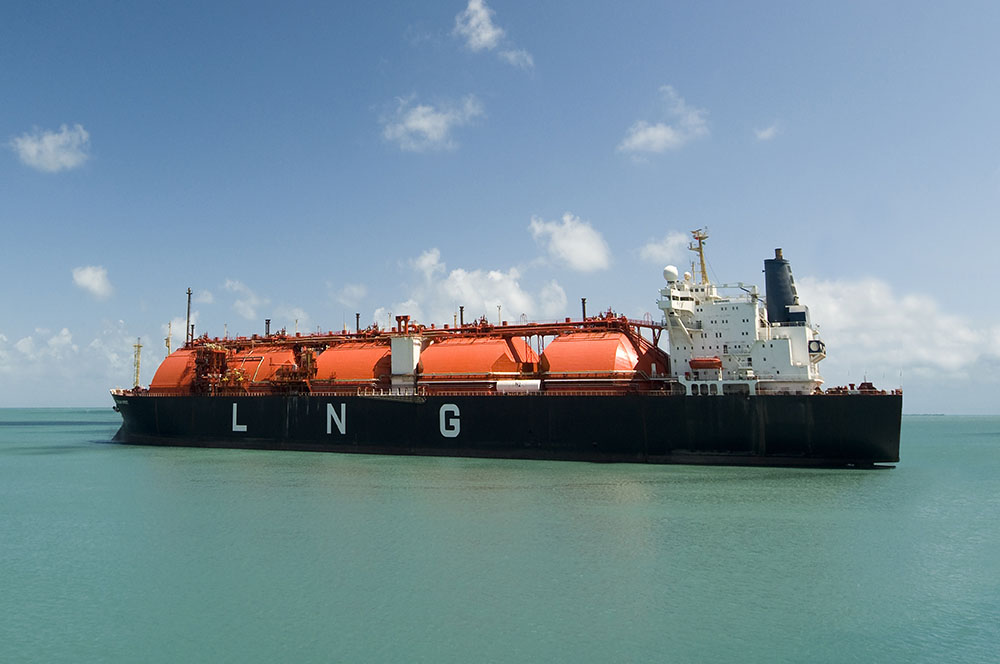AS THE Philippines navigates the complexities of energy security, affordability, and environmental sustainability, Liquefied Natural Gas (LNG) emerges as a promising solution for sustainable and reliable power generation. With its relatively low environmental impact, abundance, and suitability as a baseload energy source, LNG has been earmarked by the Department of Energy (DOE) for private sector investments to support large renewable energy (RE) capacity additions. This positions LNG as a crucial component in the country’s energy strategy.
In a recent interview over DWIZ, Engr. Ina Pauline Abelon, an LNG sector expert, emphasized LNG’s significant role as a cleaner transition fuel. “LNG produces fewer and lighter emissions. For instance, when compared to diesel and the gasoline used in vehicles, the combustion products or smoke produced by oil products are much greater than those produced by LNG,” noted Abelon. This cleaner combustion profile makes LNG attractive within the global shift towards more sustainable energy sources.

Globally, LNG is widely adopted by major economies such as the US, Germany, and Japan, which are among the top users, while China, Japan, and South Korea are leading importers. Even oil producers like Saudi Arabia, UAE, and Iran are significant LNG consumers. Singapore, which relies on LNG for 94% of its energy needs, has significantly reduced its carbon emissions by increasing its share of natural gas from only 19% in 2000.
Apart from being a cleaner energy source, LNG’s primary advantage in the Philippine context is its reliability as a baseload energy source. Abelon highlighted this by saying, “LNG’s main advantage is its stability as an energy source. It is not fluctuating compared to renewable energy sources, like wind or solar power, which depend on the weather. LNG provides a continuous supply of energy, ensuring stable power supply to cities and communities.”
Abelon further added, “An LNG plant is 100% reliable as baseload. Apart from that, the efficiency of an LNG plant is very high. Clearly, among clean energy sources, LNG is more reliable compared to renewable energy sources.” As the Philippines pushes for large, intermittent renewable energy capacity additions, baseload LNG plants play a vital role in ensuring the reliability and security of the power system, which is essential for sustaining economic development and social services.
The Philippines has been actively pursuing renewable energy sources to meet its growing energy demands and address environmental concerns. However, the intermittent nature of renewables like wind and solar power poses challenges in consistently meeting energy demands. Recently, intermittent power sources such as hydroelectric power plants reduced production due to extreme summer heat, forcing outages.
Moreover, the development of renewable energy projects requires land, competitive financing, and engineering talent. These projects also need transmission availability from resource-rich locations. The recent Red and Yellow alerts over Luzon and Visayas highlighted the urgent need for more reliable energy sources that can act as baseload, positioning LNG as a viable solution.
Malampaya supplies 20 percent of Luzon’s energy requirements, but its natural gas reserves are expected to be depleted by 2027. The Philippines is turning to LNG to fill the impending energy gap and support the growing population and rapidly expanding economy. Abelon noted, “Based on the Philippine context as laid down by the DOE, it’s very clear that we are looking towards more LNG-powered plants in the Philippines.”
The Clean Energy Scenario of the Philippine Energy Plan targets a mix of 26% LNG and 50% renewable energy by 2040, reflecting LNG’s crucial position in the country’s energy strategy.
LNG currently supplies less than 5 percent of the Philippines’ energy requirements, making it a relatively new concept in power generation. Public concerns regarding its safety are being addressed, with comparisons often made to LPG, known for explosions and accidents.
Abelon clarified, “LNG consists of lighter hydrocarbons and is mainly composed of methane. The natural gas is liquefied to -162 degrees Celsius and efficiently transported via pipelines or by ships.” This process ensures its efficiency and safety across various applications, particularly power generation.
Understanding the differences between LPG and LNG is crucial. LPG, made of propane and butane, is heavier and more flammable, posing risks near the ground. LNG, composed mainly of methane, is lighter and disperses quickly if released, practically eliminating flammability. Robust safety measures and the intrinsic properties of LNG make it a secure choice for the Philippines’ energy future. “LNG plants are designed with double-lined, dual-layered tanks that meet international safety standards. The transportation of LNG is secure, adhering to the highest safety protocols,” Abelon highlighted.
LNG’s reliability and cleaner emissions profile have led to widespread adoption around the world. Abelon cited countries like Japan, Korea, and China as leading importers of LNG, leveraging its benefits to enhance energy security and support economic growth. Meanwhile, Abelon affirmed LNG’s extensive use in countries such as Australia, the US, and the UK, highlighting its global relevance.
In the Philippines, major energy players including Meralco PowerGen, Aboitiz Power, and San Miguel Global Power have initiated significant LNG projects. A notable initiative is the USD 3.3 billion integrated LNG facility, aimed at bolstering the country’s energy infrastructure and ensuring a stable energy supply. “It’s fairly straightforward. It’s been done (LNG has been adopted) across the globe. The Philippines has also adopted it to an extent. Neither will it be difficult. But just the same, thorough studies are undertaken to ensure safety for both the communities and the people operating power plants,” said Abelon.
With LNG’s potential to provide cleaner, more reliable energy, it is poised to play a key role in the Philippines’ transition towards a more sustainable and secure energy future. As the country navigates its energy challenges, LNG offers a viable solution to bridge the gap between traditional fossil fuels and renewable energy sources.






